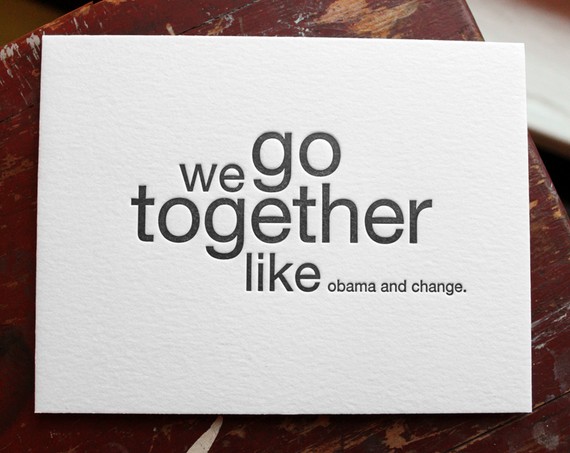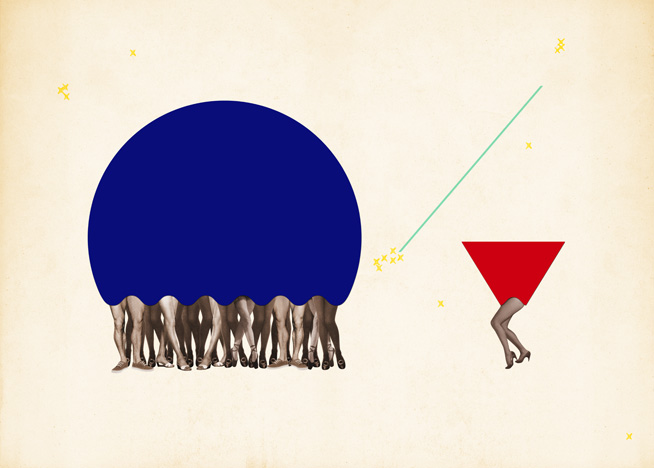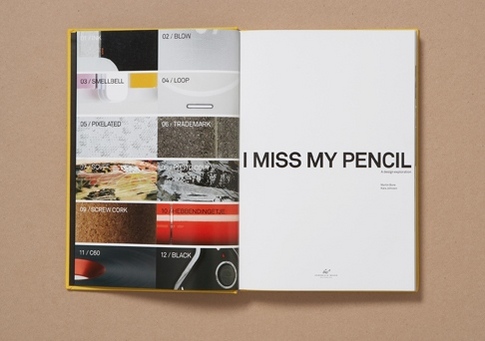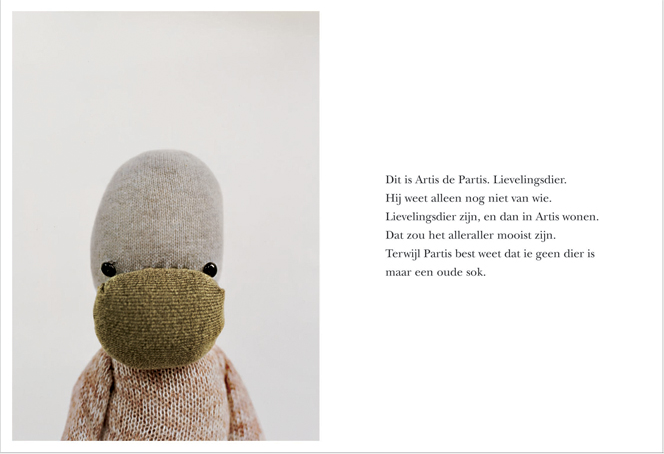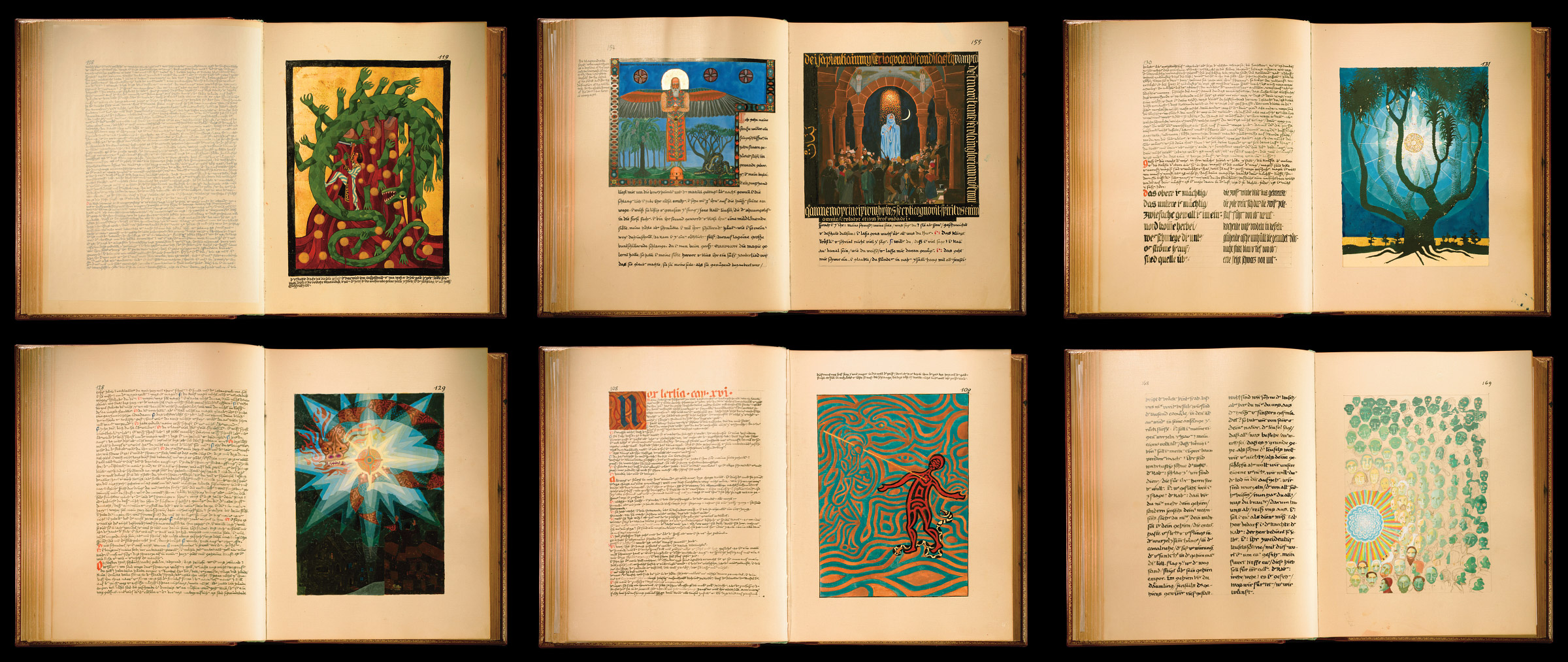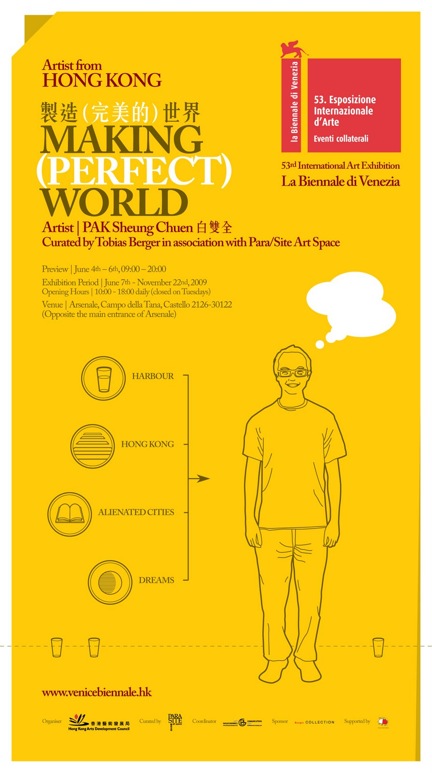Archive for the ‘inspiration’ category
Trust Breeds Magic - TINA ROTH EISENBERG
Brunch With
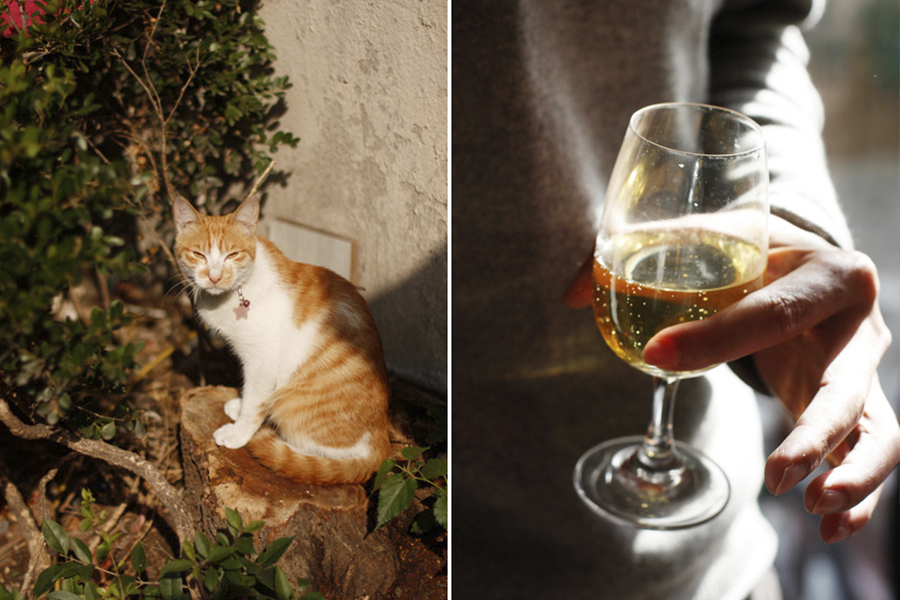
“Brunch with” is a lifestyle platform that features tastemakers’ brunch experiences from around the world.
“Brunch with” is an encounter, a serendipity, starting with food.
“Brunch with” is a shared and unique experience.
“Brunch with” is a showcase of lifestyle of different people and local foodie culture.
“Brunch with” is a moving laboratory of food and ideas.
“Brunch with” is to fulfill an intrinsic need of human beings - to gather around food.
Trail Blazers Web Surfing contest
Today I participated in a contest, a web surfing contest. To be precise: the Trail Blazers Web Surfing Contest #5 atTransmediale 2013 BWPWAP. What’s so special about this web surfing contest?
In seven rounds, eight surfers are sent to specific trails they must complete only by clicking real hyperlinks. During each round a surfer drops out. If after 15 minutes, more than one surfer is still working to reach the goal, a rush to cat/gif/earth-images speeds things up. No keyboard, no Google, no copy/paste … just real hyperlinks!
These were the 7 rounds:
Round 1:
Start here: http://www.amazon.com/
Surf to: http://www.thepiratebay.se/
Round 2:
Start here: http://play.google.com/
Surf to: http://www.itunes.com/
Round 3:
Start here: http://www.instagram.com/
Surf to: http://www.flickr.com/
Round 4:
Start here: http://www.kim.com/
Surf to: http://www.wikileaks.org/
Round 5:
Start here: http://www.lol.com/
Surf to: http://www.nooooooooooooooo.com/
Round 6:
Start here: http://www.so.cl/
Surf to: http://www.pinterest.com/
Round 7:
Start here: http://www.juanna.ch/
Surf to: http://www.gettyimages.com/
So try it yourself, just use your left mouse button.
from http://www.todayandtomorrow.net/2013/02/03/trail-blazers-web-surfing-contest-5/
Where They Create
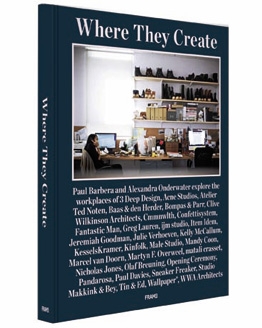
Where They Create is not ‘just a book’. It’s a one-man journey that had its inception 20 years ago, but did not find a destination until one afternoon in 2009. After interiors photographer Paul Barbera shot the studio of one of his friends, an artist, he realised he had found his own true voice. Peeking behind the scenes of creative studios in the most natural and unobtrusive way possible was a means to satisfy his never-ending curiosity towards spaces and people alike. He started the blog wheretheycreate.com, which now becomes a book.
What The Fuck Should I Make For Dinner?
I’d say eat shit, but that wouldn’t be helpful, how about some fucking
Island Kale and Sweet-Potato Soup
I don’t fucking like that.
I don’t fucking eat meat.
I want to download your fucking mobile app.
Staying Credulous: On Not Letting Being 40 Get In The Way
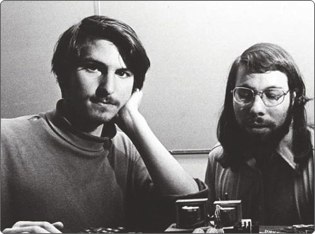
by Michael Arrington on Jun 27, 2010
I turned 40 in March. I didn’t think of it much, and I don’t plan on buying a convertible sports car or otherwise engaging in a mid life crisis. These age milestones just aren’t as meaningful for most men as they are for some women. Besides, I still have the maturity level of an average teenager.
But one thing I am very aware of is my growing skepticism of some of the crazy startup ideas I see. Five years ago when I started TechCrunch I still had real enthusiasm for any entrepreneur trying to build a company. I know from experience that starting companies is psychologically hard, even in the U.S. There are always lots of critics to tear you down. Sometimes all an entrepreneur needs is a few credulous people willing to say that they have a chance. That gives them the psychological boost they need to fight on for another day.
I have always been that guy, looking for the positive in any startup situation. Even if you fail you’ve just had the best on the job training possible. Paul Graham says it best: “So, paradoxically, if you’re too inexperienced to start a startup, what you should do is start one. That’s a way more efficient cure for inexperience than a normal job. In fact, getting a normal job may actually make you less able to start a startup, by turning you into a tame animal who thinks he needs an office to work in and a product manager to tell him what software to write.”
it best: “So, paradoxically, if you’re too inexperienced to start a startup, what you should do is start one. That’s a way more efficient cure for inexperience than a normal job. In fact, getting a normal job may actually make you less able to start a startup, by turning you into a tame animal who thinks he needs an office to work in and a product manager to tell him what software to write.”
There is some evidence that the most successful entrepreneurs are 40 or older. I don’t believe that. Or rather, it may be that statistically a startup founded by someone over 40 will be more likely to “win” financially than one started by a 20 year old. But nearly everything that is really disruptive is created by someone too young to know that they never had a chance of winning. So they blindly charge ahead, and they win.
The companies that shape our culture – Microsoft, Apple, Yahoo, Google, Facebook, etc. – are almost always started in a dorm room. These are the companies that matter in the long run.
It’s so easy to look at a startup and think of the ten startups before that tried to solve the same problem and failed. In fact, most startups look sort of dumb in the really early stages, mostly because if they were so obviously going to win then someone would have likely jumped in already. Like I said, you have to stay credulous to believe.
The wisdom that comes with experience seems like such a valuable asset to have. You have advice that people should listen to, you think, as you smirk condescendingly at the kid with the big idea and no clue what terrible obstacles stand between her and success.
I sometimes feel that skepticism creeping into my thinking when I look at a new idea being presented by an eager and innocent young entrepreneur. It’s a relatively recent thing, and I want to stamp it out like a cancer.
There’s no room in my world for that kind of nonsense. Who am I to tell someone that they can’t change the world? I say fight on. And if you fail I’ll give you a solid fist bump and tell you to get back on the horse, or whatever the saying is, and try again. Because you’re going to get it right, whether it’s this startup or another one.
So please call me on it if you see me starting to act my age. I don’t mind being 40 at all – life definitely gets better as you get older and you figure out what’s really important. But I want to look at startups with the same eager and innocent anticipation that I did when I was 25. Even when I’m 80.
Randy Pausch: Really achieving your childhood dreams
In 2007, Carnegie Mellon professor Randy Pausch, who was dying of pancreatic cancer, delivered a one-of-a-kind last lecture that made the world stop and pay attention. This moving talk will teach you how to really achieve your childhood dreams. Unmissable.
Pilvi Takala
The Trainee has been produced in a collaboration with Deloitte and Kiasma Museum of Contemporary Art. In order to realize the project, the artist was working for a month as a trainee “Johanna Takala” in the marketing departement of Deloitte where only few people knew the true nature of the project.
During the month long intervention an initially normal-seeming marketing trainee starts to apply peculiar working methods. Gradually she shifts from the position of someone others believe normal to the object of avoidance and speculation. The videos and slideshow reveal a spectrum of ways of looking after the odd member in a group. Sincere interest and bewildered amusement is juxtaposed with demands directed at the superior regarding the strangely behaving worker.
We see the trainee sitting at her workstation in the consults’ open plan office space or in the tax department library all day doing nothing. One of the videos shows her spending an entire day in an elevator. These acts or rather the absence of visible action slowly make the atmosphere around the trainee unbearable and force the colleagues to search for solutions and come up with explanations for the situation.
Masking laziness in apparent activity and browsing Facebook during working hours belong to the acceptable behavioural patterns of a work community. However, sitting in front of an empty desk with your hands of your lap, thinking, threatens the peace of the community and breaks the colleagues’ concentration. When there is no ready method of action, people initially resort to avoidance, which fails to set their mind at ease when the situation drags on.
What provokes people in non-doing alongside strangeness is the element of resistance. The non-doing person isn’t committed to any activity, so they have the potential for anything. It is non-doing that lacks a place in the general order of things, and thus it is a threat to order. It is easy to root out any on-going anti-order activity, but the potential for anything is a continual stimulus without a solution.
Supported by Finnish Cultural Foundation.
The Angels investigates the illusion of safety and perfection in a highly controlled public space.
Dressed as a shop assistant the artist performs bonafide acts of kindness, which could also be perceived
as suspicious.
Camera: Juha Laatikainen, Siri Baggerman
Assistants: Mariska Chardet, Kieran Dolan
Supported by Alfred Kordelin Foundation and Finnish Cultural Foundation
Melissa Scott
Lives in Brooklyn, NYC.
Graduated from the School of Visual Arts
Is currently working at Wolff Olins
Previously worked at MTV.

every-every.com
every-every are London based designer Yota Sampasneethumrong and illustrator Jirayu Koo-Armornpatana. We work across a variety of media as a team or as individual, creating anything from graphic design to illustration, from web to print, from moving image to branding, both commissioned and self-initiated.
We are passionate about details and take inspiration from everything in life.
Nice to meet you.
St. Vincent @ El Rey in Los Angeles
Great opening band called “Wildbird and Peacedrums”. This is their song “My Heart” with a great video.
St. Vincent tour videos! Almost a mini-documentary but simply amazing, check out the rest on her channel.
ilovestvincent
The artist’s dilemma. “I have stockpiles of terrible music. There’s no way to know it or circumvent it. You just have to go through it.”
I Miss My Pencil by IDEO
What if doorbells used smell instead of sound? What if watches told time more slowly on weekends? Designers at the ground-breaking firm IDEO—the most innovative design company in the world—push themselves to ask seemingly outrageous questions like these daily as they work to construct the products that shape our lives. Following 12 design experiments conceived by designers at IDEO, I Miss My Pencil takes a voyeuristic look at what designers do daily, might get to do once, and sometimes only hope to do. Each experiment is made real through collaboration, sketching, prototyping, fabrication, and photographing to go beyond the conceptual to the curiously concrete.
Optimism

Despite its sunny surface, “optimism” originated in a darker place. Mr. Seifer was inspired by a maxim he found printed on a Domino’s sugar packet: “An optimist is someone who tells you to cheer up when things are going his way.”
An undergraduate at the time, studying art at Clark University, Mr. Seifer incorporated the phrase into his senior thesis, which focused on an incident with his father, who once offered an empty soda bottle to a homeless man collecting cans for redemption. The man refused, finding the offer patronizing.
http://www.nytimes.com/2009/11/20/nyregion/20metrocard.html?_r=2&hp
Tattfoo Tan

Tattfoo Tan’s art practice seeks to find an immediate, direct, and effective way of exploring issues related to the individual in society through which to collapse the categories of ‘art’ and ‘life’ into one. Through the employment of multiple forms of media and various platforms of presentation, Tattfoo promotes group participation between himself and an ‘audience’. Within this collaborative practice both minds and bodies are engaged in actions that transform the making of art into a ritualized and shared experience. In keeping with the spirit of this transformative act, Tattfoo prefers to develop projects that are ephemeral and conceptual in nature.
Malaysian artist based in New York with lots of really interesting socio-conceptual projects.
John I think you’ll like this guy.
Christian Borstlap
sorry for re-posting this from QBN, but there’s alot of good work here.
Who said commercial work can’t be interesting?
Lucy McRae talks about Hyper Human
Independent designer Lucy McRae lives and works in Amsterdam, where she explores the overlapping areas of fashion, technology and the human body; the latter being an enduring fascination caused by her education as a classical ballerina. She works alone, and as part of the Lucy and Bart collective. Lucy will talk about her recent research into low-tech ways of shape the human silhouette, titled Hyper Human.
The Holy Grail of the Unconscious
This is a story about a nearly 100-year-old book, bound in red leather, which has spent the last quarter century secreted away in a bank vault in Switzerland. The book is big and heavy and its spine is etched with gold letters that say “Liber Novus,” which is Latin for “New Book.” Its pages are made from thick cream-colored parchment and filled with paintings of otherworldly creatures and handwritten dialogues with gods and devils. If you didn’t know the book’s vintage, you might confuse it for a lost medieval tome.
Of those who did see it, at least one person, an educated Englishwoman who was allowed to read some of the book in the 1920s, thought it held infinite wisdom — “There are people in my country who would read it from cover to cover without stopping to breathe scarcely,” she wrote — while another, a well-known literary type who glimpsed it shortly after, deemed it both fascinating and worrisome, concluding that it was the work of a psychotic.
What happened next to Carl Jung has become, among Jungians and other scholars, the topic of enduring legend and controversy. It has been characterized variously as a creative illness, a descent into the underworld, a bout with insanity, a narcissistic self-deification, a transcendence, a midlife breakdown and an inner disturbance mirroring the upheaval of World War I. Whatever the case, in 1913, Jung, who was then 38, got lost in the soup of his own psyche. He was haunted by troubling visions and heard inner voices. Grappling with the horror of some of what he saw, he worried in moments that he was, in his own words, “menaced by a psychosis” or “doing a schizophrenia.”
Jung recorded it all. First taking notes in a series of small, black journals, he then expounded upon and analyzed his fantasies, writing in a regal, prophetic tone in the big red-leather book. The book detailed an unabashedly psychedelic voyage through his own mind, a vaguely Homeric progression of encounters with strange people taking place in a curious, shifting dreamscape. Writing in German, he filled 205 oversize pages with elaborate calligraphy and with richly hued, staggeringly detailed paintings.
http://www.nytimes.com/2009/09/20/magazine/20jung-t.html?_r=1&pagewanted=1&em
Teaching craft in a designed world
By: Nick de la Mare, Published: Sep 22, 2009
Having gone through a traditional graphic design undergraduate and industrial design graduate education in craft-based schools, and now teaching in a graduate design program at another, I often wonder how to best prepare the designers of tomorrow for the problems they’ll face in a changing world. The generalist issues I deal with at work are very different that the ones I encountered during my education, but as my work evolves, more and more I find myself relying on skills that I learned in school.
The role of craft within design has become increasingly relevant. As design becomes more of a generalist field, with designers expected to be conversant in a far wider variety of areas than in the past, it’s important that we have a process to lean on, a foundation to build upon, and an understanding of how it, and we, became this way.
To start with, I think you have to understand “craft” both as it relates to design (graphic and industrial), but also how it relates to larger culture. You can do this by looking at the changing role and definition of craft throughout recent history. Broadly speaking (and to generalize horribly) everything was smooth sailing until the industrial revolution of the 19th century. At that point, mass production gave rise to the designed (or machine-made) object, displacing craft from its historic role in the specialized, skill-based making of applied objects. “Thinking is making” became “Thinking about making.”

An unfortunate side effect of mechanization was the sidelining of traditional craft (one-of-a-kind objects, created by a craftsman or specialist user of tools) from mainstream production. In that equation primacy was awarded to the thinking-man and generalist controller of machine and process (the “designer”). Interestingly, a similar intellectual vs. skill-based split occurred in fine art the early 20th century with the rise of Duchamp’s “conceptual,” ready-made objects. Fine art has never really recovered: witness Damien Hirst et al. But that’s another story.
The cultural changes that led to the displacement of craft within larger society have been the subject of much theoretical and political posturing and debate, the result of which is our confusion about where and how craft fits into contemporary design. Karl Marx, for example, spent much time detailing the relative values of the machine-made object vs. the craft-object in capitalist society. One of Marx’s key arguments was that the division of labor necessary for volume production in the modern factory or workshop was a tool used by the controlling classes to limit the minds and education of the ordinary worker (in a capitalist society the worker would have a shallow understanding of machine-centric tasks rather than the deep understanding of a tool-based skill-set that might exist in other cultures). Keep in mind that Marx was, of course, advocating a non-capitalist economic system.
For a number of reasons, including the dominance of traditional craft-based fields in art schools, the personal value systems of educators, and the intellectual history of many art schools as craft academies, the pre-Industrial Revolution convention of deep, hands-on specialization across narrowly defined core disciplines is still prevalent in academia. This has made life difficult for applied design fields like graphic design and industrial design, which swim in the capitalist economy where more generalized skills, mass-production and the machine economy are facts of life. The response from many applied design departments has been to advocate deep, craft-based understanding during the undergrad education process (often at the expense of theory) and then to flip entirely and focus on theory at the expense of making at the graduate level.

I think at this point it’s important to remember that craft, by definition, is fundamentally a dedicated mastery of a chosen subject matter, not necessarily just the deep understanding of a specific material or tool. Richard Sennett, in The Craftsman, cites a commonly understood 10,000 hour figure as the time needed to master any particular skill, from violin, to carpentry, to painting, to surgery:
“As skill progresses, it becomes more problem-attuned, such as the lab technician worrying about procedure—whereas people with primitive levels of skill struggle just to get things to work. At its higher reaches, technique is no longer a mechanical activity; people can feel fully and think deeply about what they are doing, once they do it well.”
If you think of craft as the dedication to “do a job well for its own sake” as Sennett does, then it becomes easier to create bridges between a theory-based and skill-based school of thought. His point is that “craftsmanship focuses on objective standards, on the thing itself. Social and economic conditions, however, often stand in the way of the craftsman’s discipline and commitment: schools may fail to provide the tools to do good work, and workplaces may not truly value the aspiration for quality…” Craft ” focuses on the intimate connection between hand and head. Every good craftsman conducts a dialogue between concrete practices and thinking; this dialogue evolves into sustaining habits, and these habits form a rhythm between problem solving and problem finding.”
I would argue that, as designers moving inexorably further from specialist to generalist roles, we need to be better at both identifying and teaching the underlying habits and structure that lie between practice and thinking, and using those habits until they become second nature. When we can rely on structures to support our advances into unknown design problems, we don’t worry as much about taking the first step, or screwing up the execution of our idea. Those on the making side must focus more on the theory and reasoning behind the things they create, and vice versa; those on the theoretical side must hone their ability to create. Ultimately the best-looking thing is meaningless if there’s nothing behind the façade, and the best story is useless if nobody can understand it. My sense is that at the most fundamental level, as designers we need to focus on gaining resolution in the tension between concrete practices and thinking.
As more and more of our design problems become entirely systemic or have no physical instantiation, we must rely on craft-based structures to guide us. There is probably always going to be some gulf between those that value “thinking is making” and those that value the intellect or concept over the physical. If we understand the principles that lead to that confusion or tension, we can recognize the gulf as it happens and try to design reconciliation.
Foundation in design school used to be seen as gaining knowledge in a certain physical process (typography, printing, color theory etc.) but those tactical tools in themselves fall short of the needs designers face today. Technology is moving at such a pace that we can’t hope to spend 10,000 hours in any one discipline and be certain that the discipline itself will remain relevant or timely. Luckily we can offset some of our learning time to the tools themselves. It doesn’t take as much time to gain mastery of Photoshop and pixels as it does to master a lathe and to understand grain patterns of wood. Thus, we can focus on the process behind the tools themselves, abstracting the tool to a behavior (a balance of both theory and making) that can be applied to any number of design problems. This allows us flexibility while also staying true to the changing nature of craft itself.
http://creativity-online.com/news/teaching-craft-in-a-designed-world/139195
PAK Sheung-chuen
Featured Artist at the Venice Biennale HK Pavilion. I couldn’t choose a project to show you here cause they are ALL too great, just go check out his website and see for yourself. HERE
Career Decision
found this on QBN….http://www.qbn.com/topics/579601/
on Jan 19, 2009:
- whitewolf
-
So hypothetically I know this kid who is an entry-level designer.
This guy interviewed for a graphic design position that included: photo studio work, print, illustration/logo, some web comps etc. He got the job offer and accepted. Three weeks into the job, he was given a web project. He was to take a pre-designed comp and develop/build the website. Keep in mind that in the interview process this kid explicitly expressed that all he had was a basic knowledge of web technology (flash animation, html, xhtml, basic css, tables etc) This person tackled the project the best that they knew how and upon completion was question of their ability.
A meeting was then held with the CEO and creative director: Bottom line, we need someone who can do web, and only web, either get up to par or get out. So, this person then consulted many a tutorial and fellow web personnel in the company. Now this person is up to par with company demands. They can build with css, div tags etc.
It has been three months since the meeting and this person has yet to see another non-web job. This person is thankful for the crash course and learning a bit of web development, but is creatively stifled.
So…
Should this person:
A) Stick with this company for one year, learning as much as they can and reaching the 1 year agency experience mark for the resume. Then apply elsewhere for a more fitting position.
or
B) Leave at the 8 month mark, and cash in on the opportunity to live in Southern Sudan/ Northern Uganda and work with a dear friend’s humanitarian non-profit. Basically riding around in land rovers helping build schools and medical centers for refugees. This would be a total of 3 months and then this person would return to the states and start the job hunt over again.
So, is getting a full year under their belt at a place that they do not trust help them more? Or should this person cut the agency experience short by pursing a passion and going on the ultimate adventure?
Fire away.
————–
9 months later, he returns from Sudan/Uganda with this video:
Teaser 2 from WHY THE WOODS on Vimeo.
I’m so glad he made the right decision.
Bringing ‘Where the Wild Things Are’ to the Screen

Spike Jonze, the director with the childlike imagination, and the actor Max Records. (Jonze is the one without a wolf suit.)
Spike Jonze, who is 39, has directed just two feature-length films, “Being John Malkovich” and “Adaptation.” Both were critical and commercial successes, praised for their originality and absurd humor, and yet they represent only a small fraction of the work that Jonze’s fans admire. He is part of the first generation of filmmakers to come up through the music-video world — in the seven years between 1995 and 2001, he was named best director three times at the MTV Video Music Awards — and his inventive, adventurous style is evident not just in the Hollywood movies he has worked on but also in his videos, skateboard-company promos and TV commercials for companies like Ikea, Nike and the Gap. These miniatures, which Jonze considers to be of no less artistic merit than his longer works, will be celebrated next month as part of a 10-day retrospective at the Museum of Modern Art, an unlikely honor for a filmmaker with his background. He never went to film school — or, for that matter, to college. When “Star Wars” had its first run in the movie theaters he went to see it eight times, but he didn’t see “Citizen Kane” until he was well into his 20s, he told me, and he has never seen a single movie by Howard Hawks or John Ford.
Jonze avoids Hollywood, preferring to stick close to the fashionably scruffy neighborhoods where he lives and skateboards (Los Feliz in Los Angeles and the Lower East Side in New York). Even so, the Hollywood establishment has largely embraced him. In 2000, “Being John Malkovich” was nominated for three major Academy Awards, including best director. Two years later, Jonze was an executive producer for “Jackass: The Movie,” a desultory collection of stunts and pranks that was made for just $5 million and became an unexpected hit, ultimately grossing more than $79 million at the box office. In 2003, “Adaptation” garnered four more Academy Award nominations and one Oscar (Chris Cooper’s, for best supporting actor). Jonze, it seemed, was that rare breed, an American filmmaker who had managed to find mainstream success without doing anyone else’s bidding. And then, that summer, he decided to make his first big studio movie.
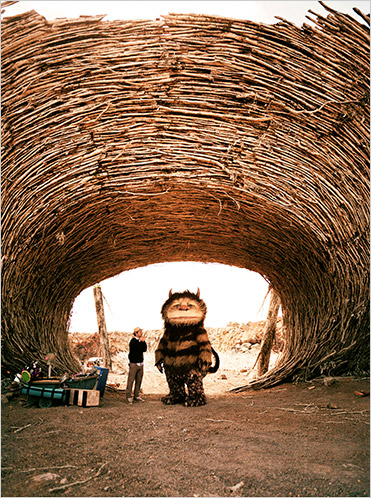
http://www.nytimes.com/2009/09/06/magazine/06jonze-t.html?_r=2&pagewanted=1
Copyright © _dreams. All rights reserved.

